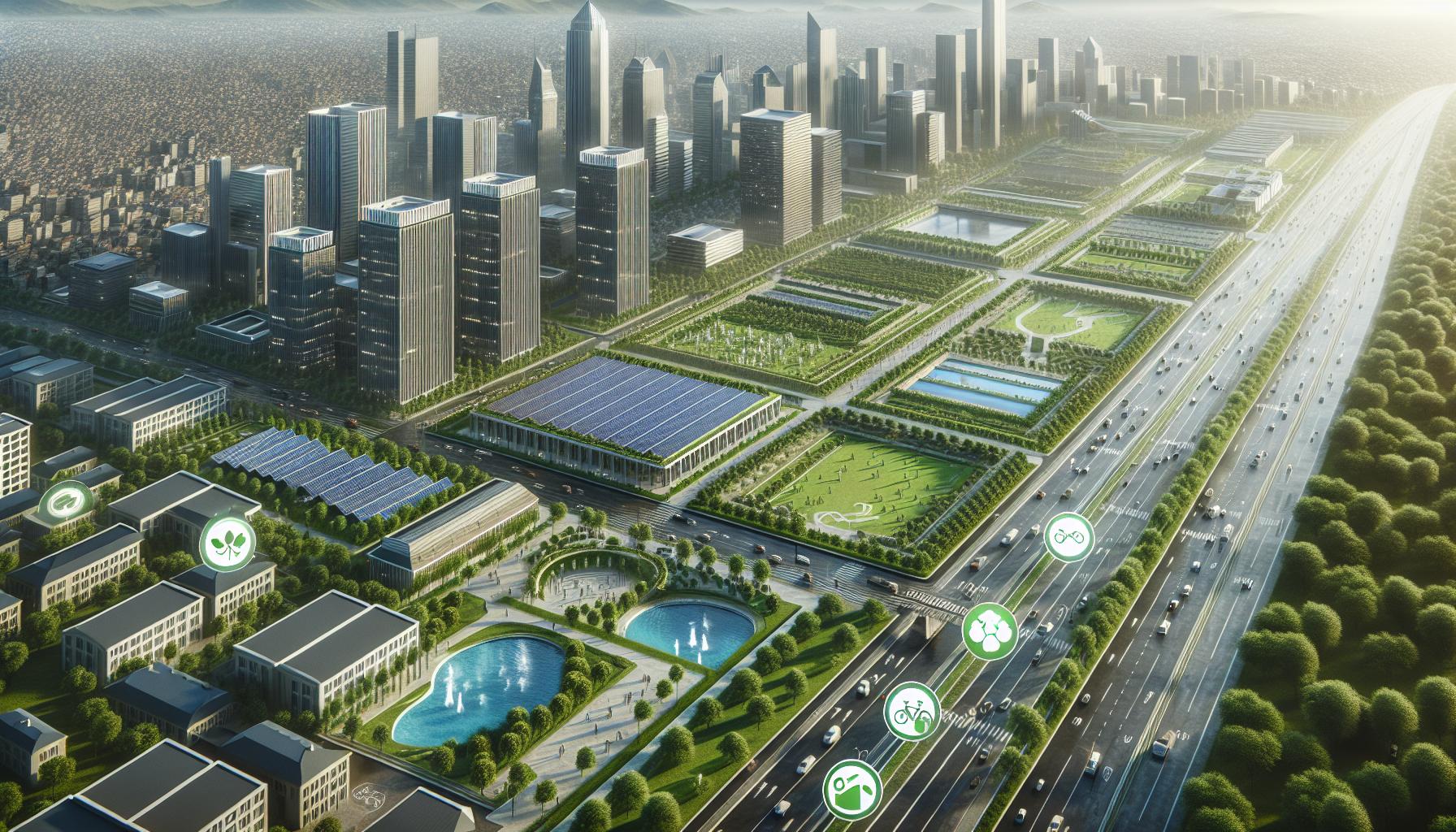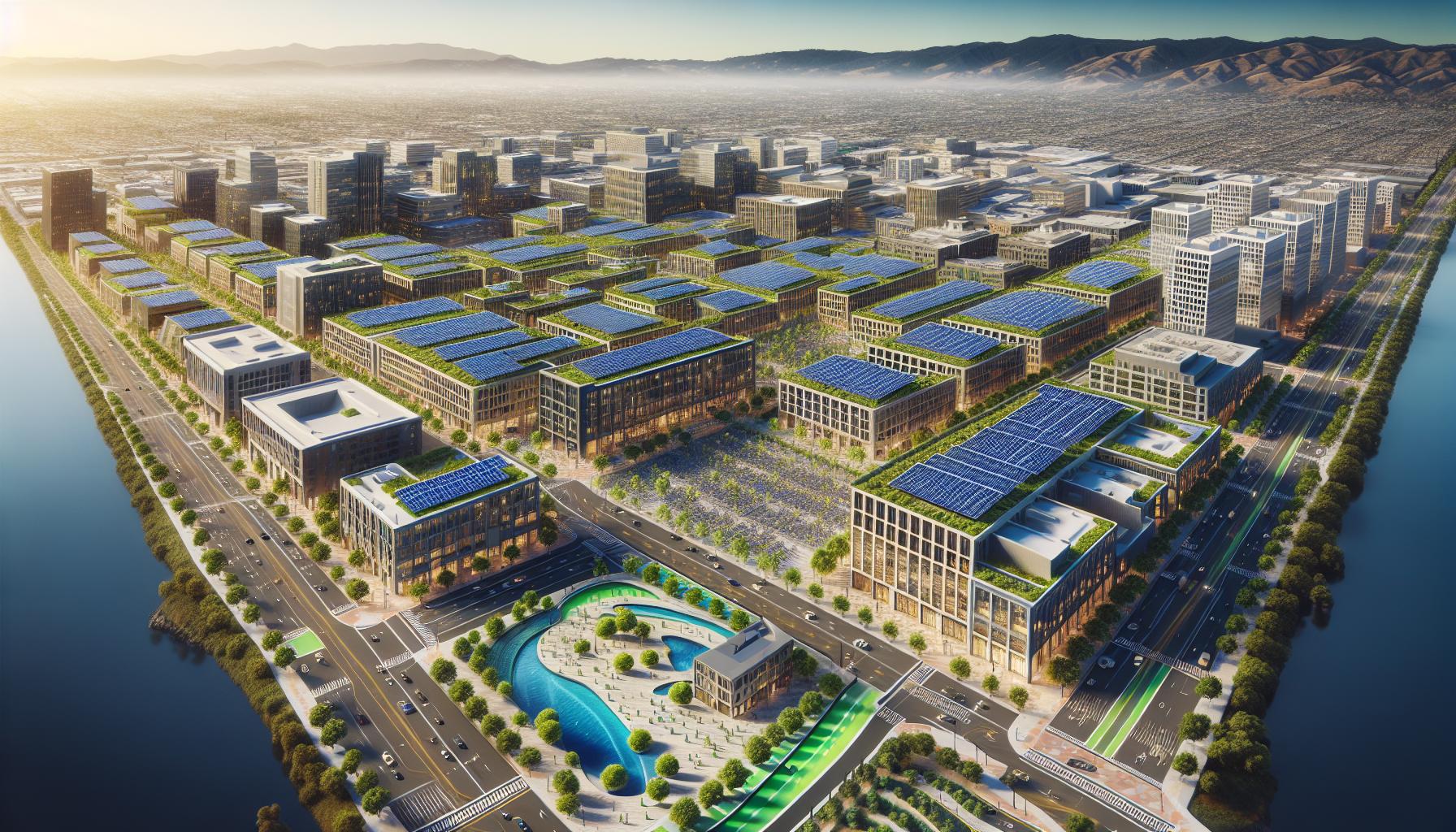In my journey to uncover the green heart of our communities, I’ve turned my attention to Santa Rosa, a city that’s quietly championing sustainability. Nestled in the wine country, Santa Rosa’s local government is not just about preserving its natural beauty; it’s about setting a precedent for environmental stewardship.
From innovative recycling programs to ambitious renewable energy projects, Santa Rosa is making significant strides towards a sustainable future. It’s inspiring to see how local initiatives can lead to substantial environmental impacts. Join me as we delve into the efforts that make Santa Rosa a leading light in the sustainability movement.
Understanding Santa Rosa’s Approach to Sustainability
Following Santa Rosa’s commitment to sustainability, I’ve noticed that the city’s approach encompasses more than just recycling programs and renewable energy projects. This city has adopted a holistic strategy to ensure every aspect of its operations contributes to a sustainable future.
Firstly, Santa Rosa emphasizes community engagement and education. It’s clear that the city recognizes the importance of having its residents on board with sustainability efforts. Various workshops, seminars, and community events are held throughout the year to educate and encourage individuals and businesses to adopt more sustainable practices. For instance, local schools participate in sustainability programs designed to instill environmental consciousness in students from a young age.
Secondly, water conservation measures in Santa Rosa stand out. The city has implemented innovative technologies and policies to reduce water usage amidst California’s frequent drought conditions. Programs like the rebate initiative for water-efficient appliances and the strict regulations on water use in landscaping are examples of how Santa Rosa is combatting water scarcity issues head-on.
Moreover, Santa Rosa’s dedication to preserving natural habitats and biodiversity is commendable. The city works closely with environmental organizations to protect local ecosystems, focusing on the restoration of rivers and creeks that are vital to the region’s biodiversity. Parks and green spaces are meticulously maintained, serving as lungs for the city and sanctuaries for local wildlife.
Furthermore, Santa Rosa is making significant investments in green infrastructure. The development of bicycle lanes and pedestrian paths encourages residents to opt for more eco-friendly modes of transportation, thereby reducing the city’s carbon footprint. Additionally, Santa Rosa is upgrading public buildings and facilities to meet green building standards, incorporating energy-efficient designs and materials to minimize environmental impact.
In essence, Santa Rosa’s approach to sustainability is multifaceted, addressing various environmental challenges through proactive measures. By focusing on community involvement, water conservation, natural habitat preservation, and green infrastructure development, the city is paving the way for a sustainable future. It’s inspiring to see the comprehensive initiatives Santa Rosa is undertaking and the precedence it sets for cities worldwide in the realm of environmental stewardship.
Key Sustainability Initiatives by Santa Rosa Local Government

Building on Santa Rosa’s commitment to a broad-based approach to sustainability, the local government has launched several key initiatives that aim to reinforce this commitment. These endeavors not only underscore the importance of environmental stewardship but also highlight practical steps taken to protect and enhance our community’s natural assets. Here, I’ll dive into some of these initiatives, shedding light on how Santa Rosa is setting benchmarks for sustainable living.
Firstly, energy efficiency and renewable energy projects stand at the forefront of Santa Rosa’s sustainability efforts. The city has invested heavily in solar installations on public buildings, ranging from City Hall to local schools. This transition to renewable sources not only reduces greenhouse gas emissions but also lowers energy costs, setting a sustainable example for local businesses and residents.
Secondly, water conservation measures have seen significant emphasis, reflecting Santa Rosa’s recognition of water as a precious resource. Enhanced irrigation practices in public parks, the installation of water-efficient fixtures in municipal buildings, and community campaigns to reduce water usage at the household level are just a few examples. These measures not only conserve water but also teach the community the value of resource management.
Thirdly, habitat and open space preservation have been prioritized to maintain biodiversity and provide recreational spaces for residents. Efforts include the restoration of riparian habitats along Santa Rosa Creek, protection of endangered species’ habitats, and the expansion of green belts around the city. These actions help balance urban development with the need to preserve natural landscapes.
Fourthly, bike and pedestrian infrastructure development has been another focus. Santa Rosa aims to promote alternative modes of transportation by expanding bike lanes, improving pedestrian pathways, and launching public transit initiatives that encourage reduced reliance on automobiles. Such infrastructure not only supports a healthier lifestyle but also contributes to reducing traffic congestion and air pollution.
Lastly, green building practices are being integrated into municipal building codes to ensure that new constructions and major renovations adhere to high environmental standards. These include energy-efficient lighting, low-flow water fixtures, and the use of sustainable building materials. By setting these standards, Santa Rosa not only aims to reduce the environmental impact of its buildings but also encourages the private sector to adopt green building practices.
Challenges and Solutions in Implementing Sustainability Initiatives

Navigating the sustainability landscape in Santa Rosa presents its unique set of challenges, yet, with innovation and community collaboration, we’re finding effective solutions. Let’s delve into some of these hurdles and the creative strategies employed to overcome them, further bolstering Santa Rosa’s environmental stewardship.
Financial Constraints
Securing funding for sustainability projects is a significant challenge. However, Santa Rosa has leveraged federal grants and partnered with private sectors to bridge financial gaps. For instance, solar panel installations in public buildings benefited from governmental subsidies, reducing the city’s upfront costs.
Regulatory Hurdles
Adhering to state and federal regulations while pushing for innovative sustainability initiatives can be complex. My approach has been to work closely with legal experts to ensure that all new projects meet regulatory standards without stifiling our sustainability goals. This collaboration has enabled the integration of green building codes into municipal regulations more seamlessly.
Community Engagement
Achieving wide-scale community buy-in for sustainability projects isn’t always straightforward. To tackle this, I’ve seen Santa Rosa invest in public education campaigns that highlight the personal and communal benefits of eco-friendly practices. Community workshops, school programs, and interactive online platforms have played crucial roles in building a city-wide culture of sustainability.
Technology and Infrastructure
Transitioning to green infrastructure and technologies requires overcoming initial technical challenges. Santa Rosa has met these challenges head-on by investing in expert consultations and pilot programs. An example includes the testing of water-saving technologies in city facilities before broader implementation, ensuring they’re both effective and adaptable.
Environmental Concerns
Protecting local habitats while advancing urban sustainability projects necessitated striking a delicate balance. Santa Rosa’s solution involved conducting comprehensive environmental impact assessments for every major project, alongside ongoing monitoring. This has enabled the city to proceed with developments like expanding bike and pedestrian paths without disrupting local ecosystems unduly.
Future-Proofing
Ensuring that sustainability initiatives remain relevant and effective in the long-term is crucial. Santa Rosa addresses this by continuously revisiting and revising its sustainability strategies, incorporating the latest scientific research and technological advancements. This adaptive approach ensures that the city’s efforts are not only effective today but will continue to be so in the future.
By facing these challenges head-on and crafting innovative solutions, Santa Rosa is steadily advancing on its path to sustainability. It’s a journey marked by continuous learning, adaptation, and commitment to environmental responsibility.
Impact and Outcomes of Santa Rosa’s Sustainability Initiatives
Building on Santa Rosa’s comprehensive sustainability approach, the impact and outcomes of these initiatives have been substantial and multifaceted. Pioneering in areas such as community engagement, water conservation, and green infrastructure, the city has seen tangible results that not only promote a healthier environment but also foster a strong sense of community and resilience.
Decrease in Water Consumption: Through concerted efforts in water conservation, including the promotion of drought-resistant landscaping and the installation of efficient irrigation systems, Santa Rosa has significantly reduced its water usage. Residents and local businesses have embraced these changes, resulting in a measurable decrease in water consumption citywide.
Enhancement of Green Spaces: The initiative to preserve habitats and enhance green infrastructure has led to the rejuvenation of several local parks and the creation of new green spaces. These areas serve as urban oases for residents, improving air quality and providing essential habitats for local wildlife.
Increased Community Engagement: Education and outreach programs have significantly increased community awareness and participation in sustainability efforts. Schools, local organizations, and individuals have become active participants in initiatives, contributing to a collective effort towards a more sustainable Santa Rosa.
Advancement in Sustainable Transportation: Investment in sustainable transportation has seen a notable increase in the use of public transit, cycling, and walking. The city’s initiatives to expand bike lanes and improve public transportation networks have made these options more accessible and attractive, reducing the reliance on personal vehicles and contributing to decreased carbon emissions.
Improvements in Energy Efficiency: The shift towards sustainable buildings and the incorporation of eco-friendly technologies have resulted in reduced energy consumption across the city. Many buildings now feature solar panels, energy-efficient lighting, and advanced HVAC systems, leading to lower utility bills for residents and businesses and a smaller carbon footprint for the city.
Resilience to Climate Change: Santa Rosa’s sustainability initiatives have also enhanced the city’s resilience to climate change. Through habitat preservation, green infrastructure, and community education, the city is better prepared to face extreme weather events and environmental challenges, ensuring a safer, more sustainable future for all residents.
As I delve deeper into the effects of these initiatives, it’s clear that Santa Rosa’s commitment to sustainability has not only addressed immediate environmental concerns but has also laid the foundation for long-term growth and resilience. Through continuous innovation and community collaboration, the city is setting a benchmark for sustainability efforts that other cities could well aspire to.
Conclusion
Santa Rosa’s journey toward sustainability is a testament to what’s possible when a community comes together for the greater good. It’s inspiring to see the strides they’ve made in water conservation, green infrastructure, and so much more. Despite facing hurdles like financial constraints and regulatory challenges, their commitment to eco-friendly initiatives shines through. It’s clear that with continued innovation and collaboration, Santa Rosa isn’t just making a difference in their own backyard—they’re paving the way for cities everywhere to rethink how they approach sustainability. I’m excited to see what the future holds for them and hope their story encourages others to take bold steps towards a more sustainable world.
Ben Rutstein is the publisher of this website, he started traveling to northern California in 2014, and the Santa Rosa is one of his favorite places to visit, from that time onwards he has explored everything from visiting cafes to yoga in parks, local hikes.
He is known to drop everything at a moments notice for a visit to a winery or a visit to a park.
